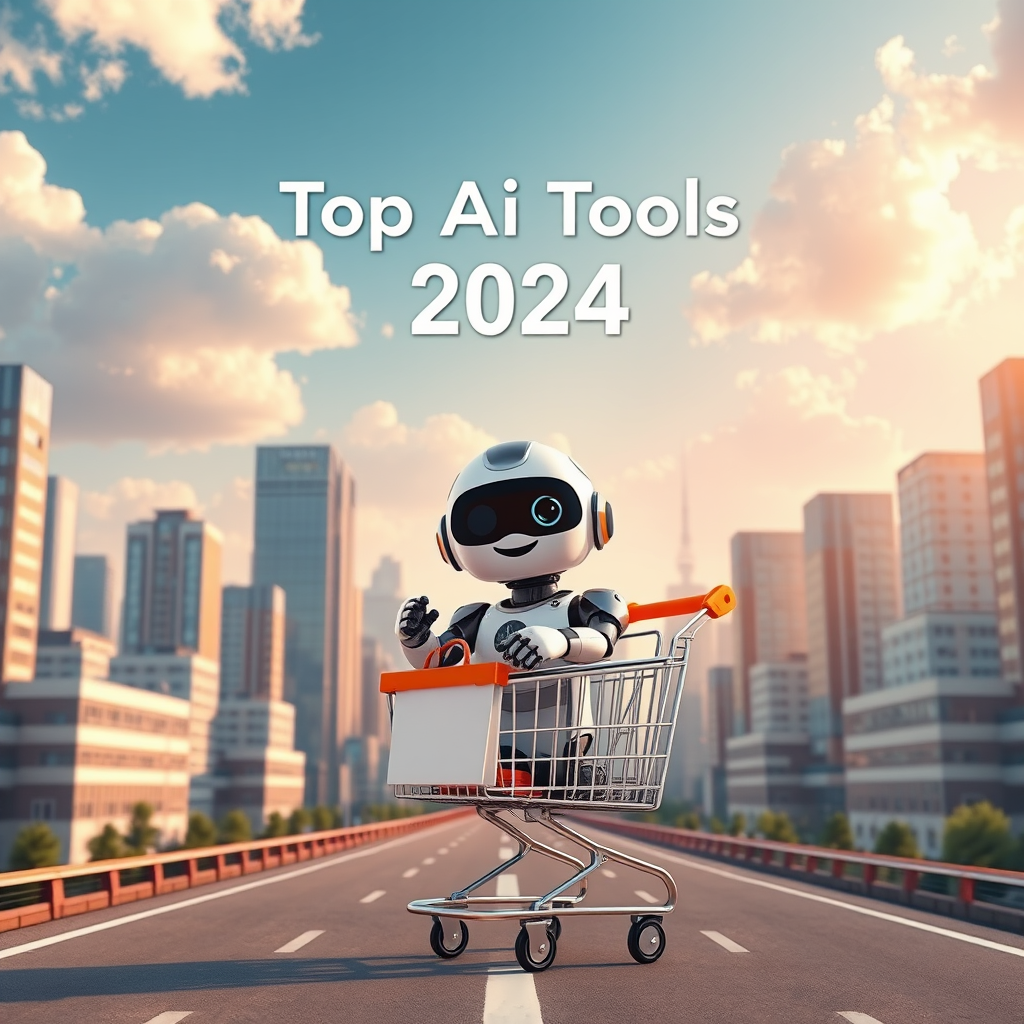Adres
Polska, Warszawa

Artificial Intelligence (AI) tools are transforming how we work, create, and solve problems. This article provides an in-depth exploration of the most popular AI tools ranked in Q4 2024. Each tool has been categorized into leaders, creative powerhouses, and niche solutions to provide a comprehensive understanding of their applications and value. Links to each tool’s official website or relevant platform are included for further exploration.
S-Tier Leaders: Innovation and Daily Utility
ChatGPT
OpenAI’s ChatGPT remains at the forefront of conversational AI. Renowned for its adaptability and reasoning capabilities, it powers a broad spectrum of applications, from customer service bots to advanced personal assistants. With recent updates, including voice functionality and multi-file inputs, ChatGPT has expanded its reach into business, education, and creative industries.
• Key Features: Custom GPTs, voice interactions, and reasoning models like GPT-4 Turbo.
• Applications: Daily communication, writing assistance, and research.
• Impact: Its benchmark performance inspires competitors and sets industry standards.
Perplexity
Dubbed the “Google of AI,” Perplexity excels at combining search engine functionality with conversational AI. It allows users to query real-time data and receive accurate, synthesized information. With model-agnostic support, it integrates with advanced AI models like GPT-4, making it a versatile choice for knowledge workers.
• Key Features: Real-time search, web integration, and multiple model compatibility.
• Applications: Research, learning, and professional inquiries.
• Impact: It has become a preferred tool for researchers and students.
Cursor
Cursor is redefining software development by providing intelligent assistance across entire codebases. Developers praise its ability to streamline debugging and contextual problem-solving. With features that go beyond code suggestion, Cursor is shaping a new era of software engineering.
• Key Features: Codebase context, debugging assistance, and inline suggestions.
• Applications: Software development and programming.
• Impact: Teams in Silicon Valley increasingly adopt it for real-time collaboration.
Creative Powerhouses: The Artistic Side of AI
MidJourney
MidJourney is synonymous with hyper-realistic image generation. Despite competition from newer tools, its aesthetic quality remains unparalleled. It is widely used for marketing campaigns, digital art, and cinematic concepts.
• Key Features: Realistic rendering and customizable styles.
• Applications: Art, branding, and visual storytelling.
• Impact: Continues to set benchmarks for artistic AI.
Leonardo AI
Leonardo AI is an emerging favorite for creatives, offering vibrant designs and robust customization. Its proprietary Phoenix model enables users to generate high-quality visuals suitable for YouTube thumbnails, product advertisements, and more.
• Key Features: Phoenix model, aesthetic customization, and high-resolution outputs.
• Applications: Graphic design and content creation.
• Impact: Challenges established leaders like MidJourney with its unique artistic flair.
Runway
Runway leads the charge in AI video creation. With features like motion interpolation, background removal, and multi-camera angles, it is a must-have for video professionals. Its tools are intuitive, enabling creators to achieve Hollywood-level effects without expensive equipment.
• Key Features: Multi-camera angles, video editing tools, and generative video.
• Applications: Video production, content marketing, and storytelling.
• Impact: Sets the gold standard for AI-powered video editing.
Niche and Emerging Tools
Eleven Labs
Eleven Labs is revolutionizing audio with its state-of-the-art voice cloning and sound effect generation. Its versatility has made it popular among content creators and businesses alike, enabling lifelike voiceovers and immersive audio experiences.
• Key Features: Voice cloning, sound effect creation, and text-to-audio conversion.
• Applications: Podcasting, faceless YouTube channels, and advertising.
• Impact: The tool is reshaping the audio industry.
Notebook LM
Notebook LM offers an innovative approach to learning and summarization. Powered by Google’s Gemini, it transforms documents, transcripts, and links into interactive insights. Its podcast-style feature is a game-changer for education and content consumption.
• Key Features: Document insights, AI-powered podcasts, and vast context windows.
• Applications: Education, research, and journalism.
• Impact: Demonstrates how AI can redefine how we consume and interpret information.
Descript
Descript simplifies video and audio editing by turning transcriptions into editable text. Users can edit media files by adjusting the text, making it an essential tool for creators and editors looking to save time and effort.
• Key Features: Text-based media editing and voice cloning.
• Applications: Video production and podcasting.
• Impact: Streamlines workflows for small teams and independent creators.
AI Tools by Industry Use
For Developers
• GitHub Copilot: Streamlines coding with AI-driven inline suggestions. Explore GitHub Copilot
• Cursor: Comprehensive debugging and code context tools.
• Replit AI Agent: Aims to simplify end-to-end web development. Explore Replit AI
For Creative Professionals
• MidJourney: High-end image generation.
• Leonardo AI: Unique, vibrant aesthetics.
• Adobe Firefly: Focuses on ethical AI training data. Explore Adobe Firefly
For Researchers
• Perplexity: A search-enhancing tool that synthesizes web data.
• Notebook LM: Combines contextual understanding with vast data processing.
Key Trends in AI Development
1. Model Agnosticism
Tools like Perplexity integrate multiple AI models, ensuring adaptability and offering users a choice in processing methods.
2. Creative Freedom
Platforms like Eleven Labs and Leonardo focus on empowering creators with tools that adapt to individual visions.
3. Integrated Workflows
AI tools such as Descript and Runway seamlessly integrate with existing workflows, reducing barriers for adoption.
4. Democratization of AI
Open-source tools like Stable Diffusion provide accessible entry points, enabling innovation beyond corporate walls.
Future Prospects and Challenges
• Privacy and Ethics
AI tools must address concerns about data privacy and the ethical implications of training on unlicensed content.
• Real-Time Updates
Speed of innovation, as seen with Perplexity and Runway, will drive competition.
• Specialization vs. Generalization
Niche-focused tools like Notebook LM may thrive by solving specific problems, while generalist tools like ChatGPT dominate broad applications.
AI tools continue to advance at an unprecedented pace, offering solutions for tasks that range from coding to creative expression. As these tools mature, their impact on industries will only deepen, redefining the boundaries of what is possible. With so many options available, users can now select the tool that best aligns with their goals and workflows, creating a more efficient, connected, and creative future.